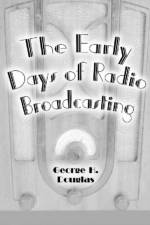von George H. Douglas
91,00 €
From the arrival of the penny papers in the 1830s to the coming of radio news around 1930, the American newspaper celebrated its Golden Age and years of greatest influence on society. Born in response to a thirst for news in large eastern cities such as New York, Boston, and Philadelphia, the mood of the modern metropolitan papers eventually spread throughout the nation. Douglas tells the story of the great innovators of the American press-men like Bennett, Greeley, Bryant, Dana, Pulitzer, Hearst, and Scripps. He details the development of the bond between newspapers and the citizens of a democratic republic and how the newspapers molded themselves into a distinctly American character to become an intimate part of daily life.Technological developments in papermaking, typesetting, and printing, as well as the growth of advertising, gradually made possible huge metropolitan dailies with circulations in the hundreds of thousands. Soon journalism became a way of life for a host of publishers, editors, and reporters, including the early presence of a significant number of women. Eventually, feature sections arose, including comics, sports, puzzles, cartoons, advice columns, and sections for women and children. The hometown daily gave way to larger and impersonal newspaper chains in the early twentieth century. This comprehensive and lively account tells the story of how newspapers have influenced public opinion and how public demand has in turn affected the presentation of the news.



